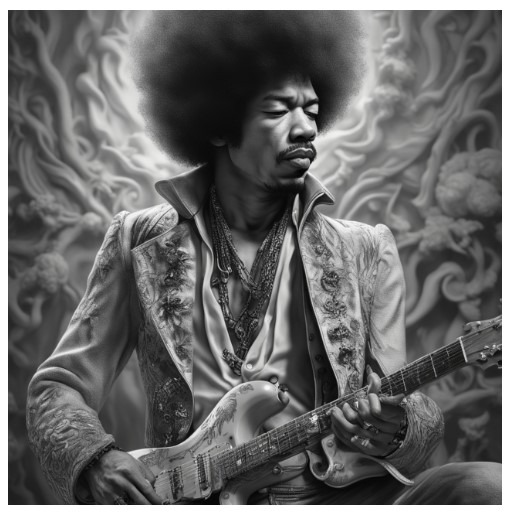The influential hippie cultural movement arose in the early 1960s and grew into a prime international collective as it gained popularity and expanded. Nowadays, the term “hippie” is usually used as a derogatory title and remains a complicated term often used to isolate many left-leaning groups or parties.
Perhaps you’re curious about how such a cultural movement started. If so, you might want to tread along to know about the beginnings of the hippie movement and understand some significant events and the people who helped define the astonishingly international movement.
The Beat Generation
Typically seen as the 60s hippie movement’s precursor, the Beat Generation was mainly a group of young writers exploring the strange cultural shifts in America after World War II. The Beat Generation was one of the country’s first counter-culture movements and encompassed obscenity, drug use, and liberal sexuality in their works and writings. Authors such as Burroughs, Kerouac, and Ginsberg were some of the most famous writers for Beat and were often the target of American controversy over literary obscenity and censorship. Many Beat writers met each other at Columbia University but chiefly ended up on the West Coast in areas like Big Sur and San Francisco. Although it was mainly a literary movement, the Beat Generation was long considered a movement, which heavily inspired the musically charged hippie movement.
Ken Kesey and The Merry Pranksters
Ken Kesey and The Merry Pranksters were one of the groups labeled as the first major hippie group. Kesey was frequently seen as the main link between the late Beat Movement and the 1960s early hippies. Kesey and The Merry Pranksters were a vast community of like-minded people in Oregon and California. They took epic road trips and drove in a brightly painted school bus while consuming copious amounts of LSD, which was still legal until 1965. The group toured the nation, gave out huge quantities of LSD, housed popular parties, and helped define the bizarre fashion and long hair that came to represent the American hippie. One of the significant events that established the group in American society was known as “Acid Tests,” which involved large groups drinking Kool-Aid mixed with LSD and attempting to experience a community-oriented trip. Merry Pranksters was also famous for its encounters with The Grateful Dead and Hells Angel Motorcycle Gang.
Vietnam War
The Vietnam War was an almost 20-year conflict of extensive proportions which helped launch the hippie movement into the mainstream American consciousness. During the mid-60s, the government of the United States began a massive military surge where considerable quantities of American troops were sent to Vietnam to destabilize and overthrow the communist North Vietnamese government, which China and the Soviet Union supported. Initially, the war was kind of famous. Still, the seemingly unending conflict stressed the American populace, who became more and more agitated with the crazed war politics and substantial loss of life. After some time, massive protests of students, hippies, and veterans began erupting everywhere (including globally) and slowly switched the view of the average American of the Vietnam conflict. The American hippie grew famous for their influence in the broad Vietnam protests and helped define their part in the tumultuous 60s.
Flower Children
The “Summer of Love” or the summer of 1967 has usually been referred to as one of the most critical widespread political and social gatherings in recent American history. More than 100,000 people gathered and transferred to the Haight-Ashbury District of San Francisco during this famous summer. Although lots of people mostly recall the “Summer of Love” happening in San Francisco, hippies congregated in most major cities in Europe, America, and Canada. The San Francisco summer is frequently remembered best since it was the cultural hub of the hippie movement where communal living, free love, and drug use became the norm. This period also helped give birth to the omnipresent “flower children,” which became a significant American symbol in the decade. Many historians have recategorized the “Summer of Love” as an influential social experiment where people from all over the world convened to question the social practices and spheres where they grew up.
An Aquarian Exposition: 3 Days of Peace & Music
For numerous children and hippies of the 1960s, the original Woodstock Festival held in 1969 was the culmination of their many years of experimentation and evolving social practices. Termed initially as “An Aquarian Exposition: 3 Days of Peace & Music,” the music and art fair was a four-day festival involving 400,000 individuals on a dairy farm in the rural State of New York. The festival, which they originally planned to be three days long, attracted people from all over and was a principal point of controversy since it was almost shut down. Multiple famous artists performed at the concert, including Jimi Hendrix, Santana, Sly and The Family Stone, Creedence Clearwater Revival, The Who, The Grateful Dead, Jefferson Airplane, and Janis Joplin. Jimi Hendrix’s legendary psychedelic performance of “The Star-Spangled Banner” came to be one of the most famous festival moments in its entirety. It helped establish the hippie movement as a profoundly political group that endeavored to rethink general society and its hold on the average individual.

